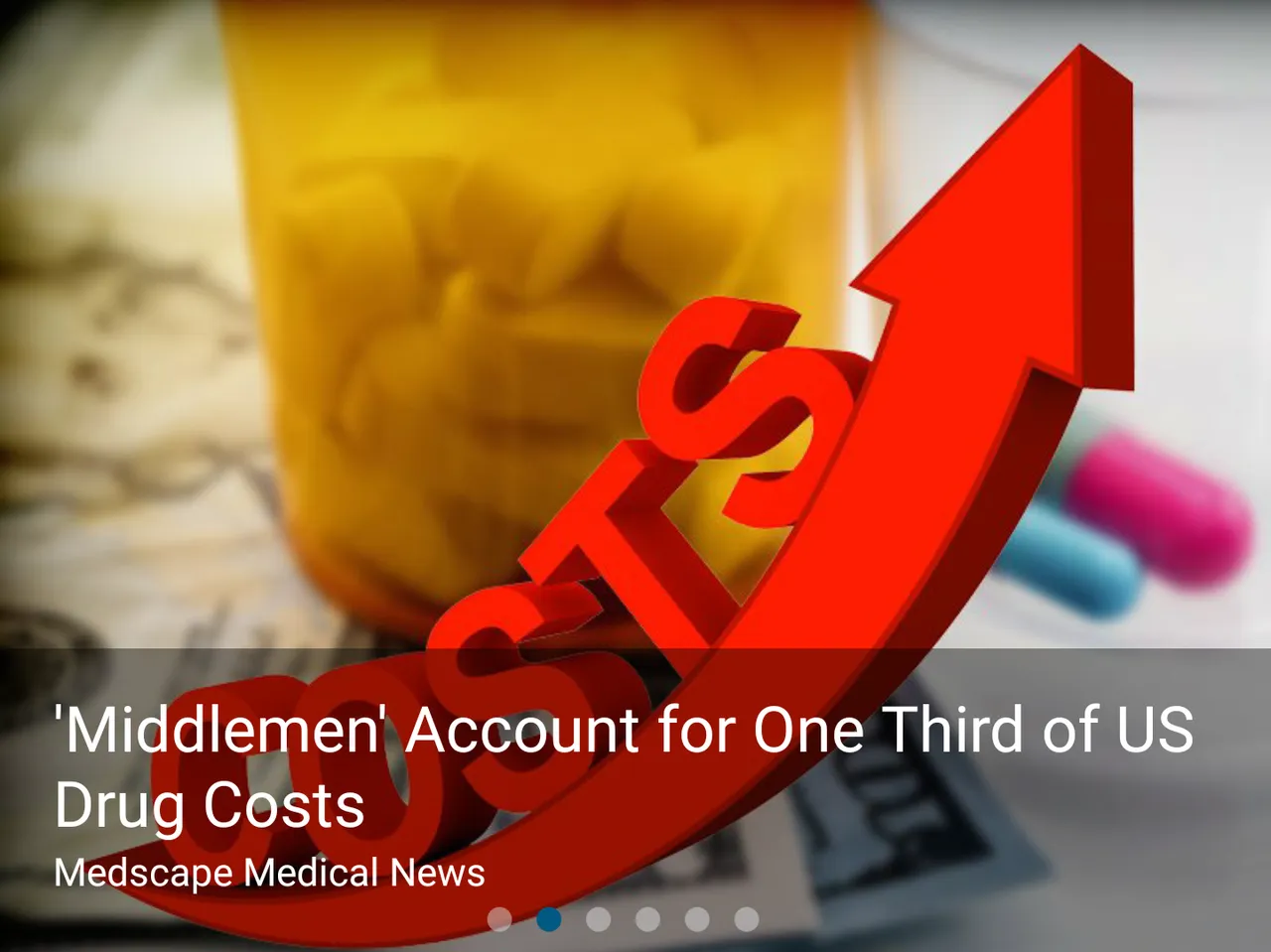About one third of drug spending in the United States goes to pharmacies, pharmacy benefit managers (PBMs), and hospitals or clinics that dispense drugs, according to an analysis published by Health Affairs.
US healthcare spending is a critical economic and political issue, with skyrocketing drug costs reaching crisis levels. Now, Nancy Yu, BA, MBA, a biopharma industry analyst from the Center for Health Policy and Outcomes at Memorial Sloan Kettering Cancer Center in New York City, and colleagues estimate that the United States spent $480 billion on drugs in 2016, including the profits of pharmacies and other intermediaries.
That is nearly 50% higher than the Centers for Medicare & Medicare Services' 2016 estimate of $328 billion in US drug spending, which did not include drugs dispensed in hospitals or clinics.
The authors note that President Trump and the pharmaceutical industry "have stressed that supply chain intermediaries, or 'middlemen,' are capturing much of the money that is often categorized as drug spending." Yu and colleagues crunched the numbers and found these intermediaries account for about one third of the spending.
"A clearer understanding of the total market size, as well as the revenues retained from the purchase, distribution, and payment of prescription drugs throughout the US supply chain, may be useful for policy makers as they seek reforms while working to preserve incentives for innovation and efficiency," Yu and colleagues write in a Health Affairs blog post published July 31.
In May, President Trump announced a raft of possible initiatives to reign in drug prices, including creating tools for Medicare to negotiate some drug prices, speeding approval for over-the-counter drugs, and promoting competition between drug makers. He also said he'd like to eliminate "middlemen," who have "become very, very rich."
The estimates by Yu and colleagues suggest that two thirds of US drug spending ($323 billion) goes to drug manufacturers' net revenues. Of the remaining $157 billion retained as gross profit by intermediaries in the supply chain, about half ($73 billion) goes to retail or specialty pharmacies and 20% ($35 billion) goes to hospitals or physicians' offices. PBMs bring in $23 billion and drug wholesalers another $18 billion, together accounting for slightly more than 25%.
"Our intent is not to infer or draw conclusions on where there are outsize profits or how difficult it would be to reduce spending within the supply chain, nor do we opine on the consequences of reducing that spending," the authors write. "But a recent policy focus on the supply chain suggests that understanding those consequences will be important."
Allan Coukell, senior director of health programs at The Pew Charitable Trusts, called the analysis useful in detailing where in the drug chain money is being spent. He said the findings largely align with a similar analysis by Pew that has yet to be published. However, he noted that PBMs pass a portion of the profits they make back to the health plans they work for, which isn't accounted for in Yu's analysis.
Much of the policy debate in Washington about the potential role of "middlemen" in driving up costs has focused on the role of PBMs in drug costs, Coukell explained. But he noted that they also provide several services including paying claims, designing drug formularies, and negotiating rebates with drug manufacturers.
"In terms of turning the tide of overall drug spending, that's not the thing driving drug spending," Coukell said. "The evidence shows PBMs are playing an important role in keeping drug costs down."
Instead, Coukell said most of the growth in drug spending is driven by high prices on new drugs and year-to-year increases on the prices of drugs still under patent with no competition. To reign in these costs, he suggested optimizing drug discounts for government programs, introducing competition in Medicare B, or boosting use of generics or biosimilars......
What is your take ?
#don't forget your upvotes
